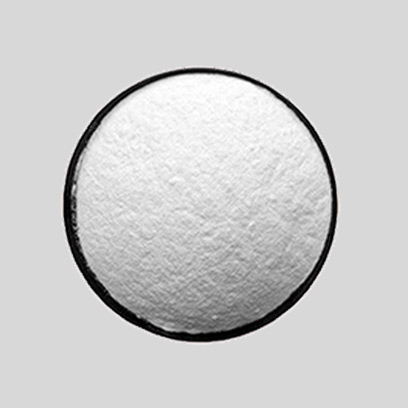
Oct . 07, 2025 03:15 Back to list
Anatase TiO2 CA-100: Coatings & Plastics Solution|High Purity, Excellent Whiteness

Source: Product Page
Introduction
Anatase Titanium Dioxide CA-100 is a high-performance pigment designed for specialized applications in coatings and plastics. This article provides an in-depth analysis of its technical specifications, advantages, and real-world applications, while also highlighting the expertise of its manufacturer, Hebei Caiqing New Material Technology Co., LTD. The product’s unique properties make it a preferred choice for industries seeking durability, lightfastness, and aesthetic quality.
Product Features
The Anatase Titanium Dioxide CA-100 is engineered to deliver exceptional performance in diverse industrial environments. Its core features include:
- High Purity: With a minimum TiO2 content of 93.0%, the product ensures consistent quality and effectiveness.
- Excellent Whiteness: The pigment exhibits a whiteness level close to standard samples, enhancing the visual appeal of finished products.
- Surface Treatment: Coated with aluminum and silicon, it improves dispersion and stability in various matrices.
- Light Scattering Strength: Despite its anatase structure, the pigment maintains strong light scattering properties, contributing to opacity and coverage.
- Weather Resistance: The product demonstrates good resistance to weathering, making it suitable for outdoor applications.

Source: Product Page
Technical Specifications
| Parameter | Specification |
|---|---|
| TiO2 (%) | 93.0 min |
| Tint Reducing Power | 100 min |
| Whiteness (contrast to standard) | Close |
| Surface Treatment | Aluminum and Silicon |
| Rutile (%) | 98 |
| Water Soluble Matter (%) | 0.5 max |
| pH of Aqueous Suspension | 6.5–8.0 |
| Residue on Sieve (325 mesh) (%) | 0.10 max |
| Oil Absorption (%) | 21.0 max |
| Water Content (105°C) (%) | 0.05 max |
| Resistivity in Water Extraction | 90.0 min |
Key Advantages
The Anatase TiO2 CA-100 offers several advantages that set it apart from alternatives:
- Enhanced Durability: The product’s surface treatment ensures long-term stability in harsh environments.
- Superior Coverage: With high hiding power, it reduces the need for multiple layers, saving time and cost.
- Flexibility: Suitable for both indoor and outdoor applications, it adapts to varying conditions.
- Cost-Effectiveness: Its high efficiency and low usage rates make it a budget-friendly option.

Source: Product Page
Application Scenarios
The Anatase TiO2 CA-100 is widely used across multiple industries. Below are its primary applications:
Coatings
In the coatings industry, the pigment is employed to enhance the whiteness and opacity of paints and varnishes. Its ability to scatter light effectively makes it ideal for both interior and exterior applications. For example, Hebei Caiqing New Material Technology Co., LTD notes that it is suitable for indoor industrial coatings, where durability and aesthetics are critical.
Plastics
In plastics, the product serves as a colorant and UV stabilizer, improving the material’s resistance to degradation. It is commonly used in polyolefin and polyvinyl chloride (PVC) applications, where its high whiteness and lightfastness are advantageous.
Paper Industry
The pigment plays a vital role in paper manufacturing, where it acts as a fluorescent whitener. By enhancing the paper’s brightness, it improves the quality of printed materials and packaging.
Textiles and Fibers
In textiles, the Anatase TiO2 CA-100 functions as a deluster agent, reducing the sheen of synthetic fibers. This property is particularly valuable in the production of fabrics for apparel and industrial textiles.
Rubber
For rubber applications, the pigment acts as a reinforcing agent, improving the material’s tensile strength and resistance to aging. It also serves as a filling agent, enhancing the overall performance of rubber products.
Company Background: Hebei Caiqing New Material Technology Co., LTD
Hebei Caiqing New Material Technology Co., LTD is a leading manufacturer of titanium dioxide pigments, with a focus on innovation and quality. The company’s product portfolio includes the CR-930 series, Anatase titanium dioxide BA01-01, and CA100 series, among others. Their advanced production equipment and skilled technical team ensure that products meet rigorous industry standards.
According to the company’s product page, Hebei Caiqing’s commitment to quality is reflected in their ability to meet the diverse needs of global customers. Their professional management team and state-of-the-art facilities position them as a trusted partner in the materials industry.
Authoritative Citations
For further insights into the properties and applications of titanium dioxide, refer to the following authoritative sources:
- National Institute of Standards and Technology (NIST) – NIST provides comprehensive research on material science, including the characterization of pigments like titanium dioxide. Their standards ensure the accuracy and reliability of industrial materials.
- NIST Publications on Pigment Standards – These resources detail the testing methodologies for titanium dioxide, ensuring compliance with international benchmarks.
Conclusion
The Anatase Titanium Dioxide CA-100 is a versatile and high-performance pigment that meets the demands of modern industries. Its technical specifications, combined with the expertise of Hebei Caiqing New Material Technology Co., LTD, make it a reliable choice for coatings, plastics, and other applications. By leveraging its unique properties, manufacturers can achieve superior product quality while adhering to industry standards.
For more information, visit the product page or explore Hebei Caiqing’s website.
References
1. National Institute of Standards and Technology (NIST). (n.d.). https://www.nist.gov
2. NIST. (n.d.). https://www.nist.gov/publications/titanium-dioxide-pigments-characterization-and-standards
-
Essential Guide to Calcium Powder Quotes – Pricing, Quality & Global Insights
NewsNov.24,2025
-
Reliable Anatase TiO2 Pigment Quotes for Sustainable Industry Use | CQ Titanium Dioxide
NewsNov.24,2025
-
Understanding Lithopone B311 Powder Quotes – Market Insights & Applications
NewsNov.23,2025
-
Reliable 30-50nm TiO2 Powders Quotes for Advanced Industrial Use | CQTitanium
NewsNov.23,2025
-
Comprehensive Guide on Lithopone Red Pigments Quotes | Industry Insights & Pricing
NewsNov.22,2025
-
Comprehensive Insights into the Lithopone Market: Global Trends & Applications
NewsNov.22,2025
